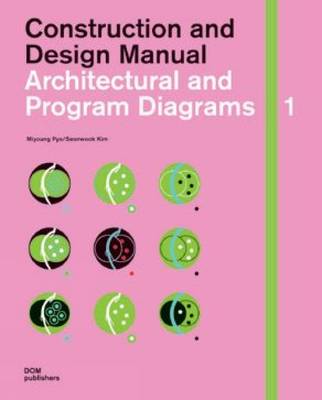Construction and Design Manual
2 total works
Architecture can be as full of suspense as a graphic novel. Similar to comic strips or graphic novels, diagrams are a visual medium of communication. This makes them easy to understand even across linguistic and cultural boundaries and an ideal method of communicating ideas to clients. Today, architectural diagrams are no longer mere aids to explaining a design or reducing an idea to a simple outline, but have emerged as an art form of their own among the creative skills related to planning and building. The title Architectural and Program Diagrams in the series Construction and Design Manual brings together more than 400 pages from a predominantly international avant-garde and offers an overview of the state of the art in architectural representation across a spectrum extending from simple arrow diagrams to sober graphs and highly elaborate, often somewhat surreal collages and computer animations which trigger a wide range of intellectual and emotional responses. Diagrams tell stories. Those able to read them can follow the process by which ideas and thoughts take visual shape, find aesthetic form and, if all goes well, become part of the built environment.
Mobility is a challenge that architecture has always had to confront; Aristotle was merely the first to philosophize about it. In the present age of digital nomadism, the art of building, with its traditional focus on immobility in fixed places, finds itself confronted by the temptation to relinquish its characteristic rootedness and to abandon itself to the irresistible pull of mobility.
In countless manifestos, avant-garde architects describe how they intend to dissolve buildings and indeed whole cities, create an architecture based on a machine aesthetic that prominently involves mobility, and give their buildings legs or wheels.
Notwithstanding the many prophets of doom that see solid, sedentary architecture sacrificed to mobile lifestyles, architects continue to take up the challenge and design portable houses.
The results are often both practical and innovative, as is demonstrated on the more than 800 pages of this new title in the Construction and Design Manual series, in which 43 international design teams present works ranging from architectural follies to handicapped accessible furnishings and life-saving shelters.
In countless manifestos, avant-garde architects describe how they intend to dissolve buildings and indeed whole cities, create an architecture based on a machine aesthetic that prominently involves mobility, and give their buildings legs or wheels.
Notwithstanding the many prophets of doom that see solid, sedentary architecture sacrificed to mobile lifestyles, architects continue to take up the challenge and design portable houses.
The results are often both practical and innovative, as is demonstrated on the more than 800 pages of this new title in the Construction and Design Manual series, in which 43 international design teams present works ranging from architectural follies to handicapped accessible furnishings and life-saving shelters.

